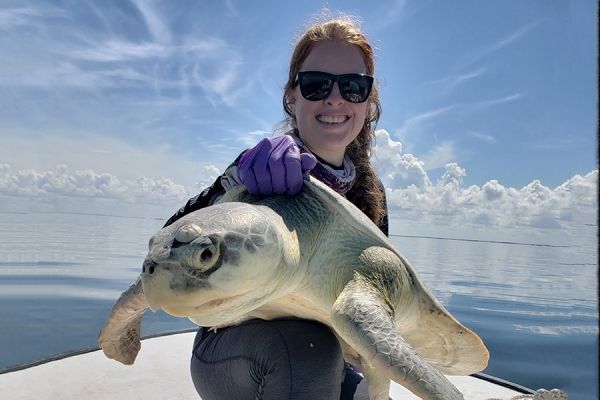Every summer, thousands of amateur scallopers flock to the warm coastal waters of Florida’s Crystal River region, anchor their boats and reap the delicious bounty of the state’s largest recreational bay scallop fishery.
For these seasonal anglers, the toothsome morsels are well worth the two- or three-meter dive. But new research from scientists at Florida State University suggests that scallop harvesting — and recreational fishing generally — may come at a cost for the vulnerable sea turtles that live and forage in these shallow seas.
“We found that during harvest season in the Crystal River recreational scallop fisheries, native sea turtle behavior changed in significant ways,” said study co-author Mariana Fuentes, an assistant professor in the Department of Earth, Ocean and Atmospheric Science. “We need to continue this work to measure how severe these changes might be.”
Their research was published this month in the journal Oryx.
The same agreeable conditions that make the northeastern Gulf of Mexico so suitable for scallop harvesting — temperate waters and lush beds of seagrass — also make the area a model habitat for green, Kemp’s ridley and loggerhead sea turtles. That made the Crystal River region the perfect natural experiment for concerned researchers.
Continue reading at Florida State University.
Image via Florida State University.


